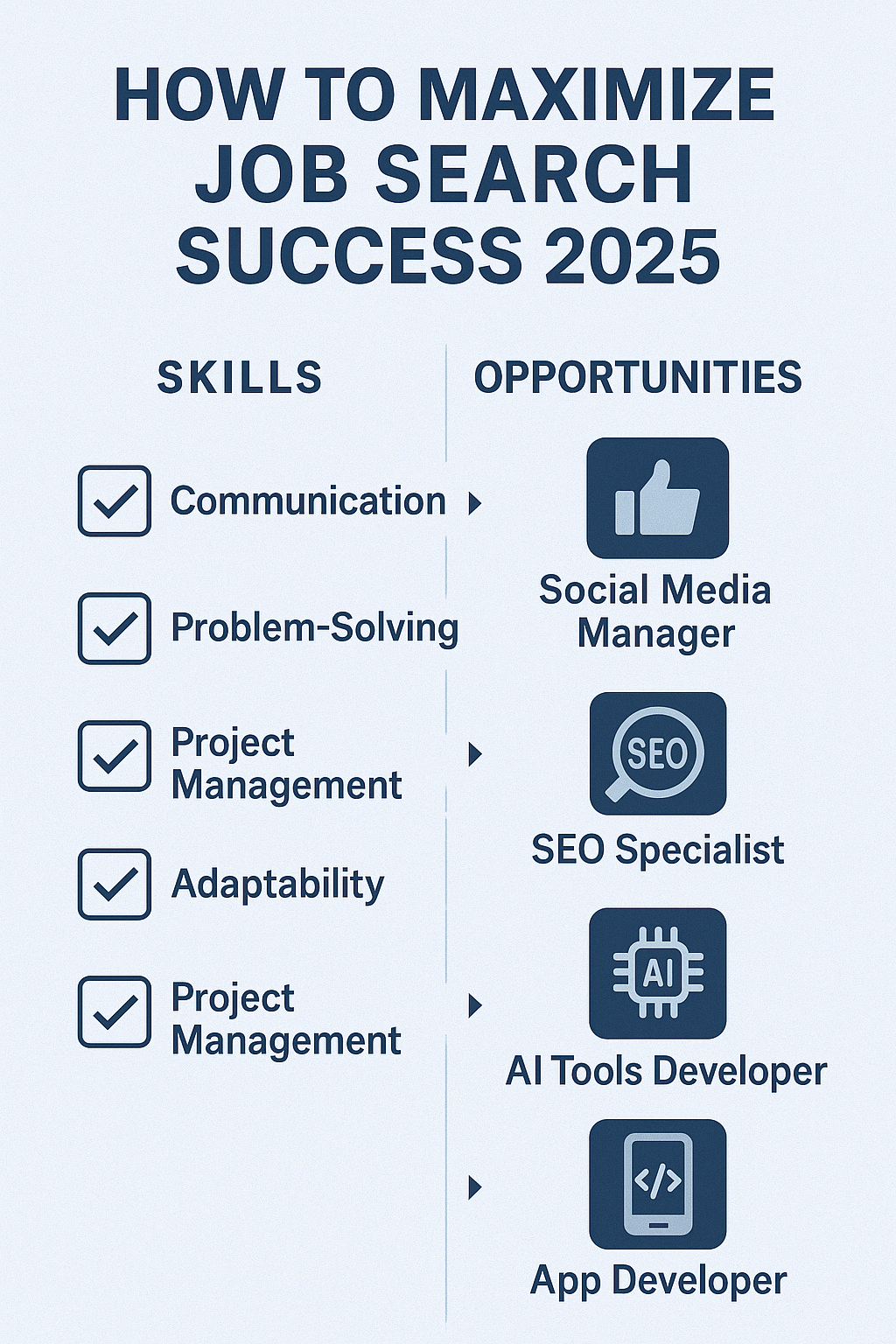In today’s fast-changing employment landscape, job seekers need more than just ambitionthey need strategy. One of the most powerful tactics in 2025 is learning how to match your skills with the right job opportunities. Whether you’re new to the workforce, changing industries, or seeking advancement, aligning your abilities with in-demand roles is key to landing a great job.
Here’s a comprehensive guide on how to identify, match, and market your skills to secure meaningful opportunities.
1. Identify Your Transferable and Core Skills
Start by auditing your current abilities. Divide them into three categories:
- Core Skills: Fundamental talents related to your job function (e.g., coding, writing, sales).
- Transferable Skills: Applicable across industries (e.g., communication, leadership, problem-solving).
- Technical Skills: Tools, platforms, or software you’ve mastered (e.g., Excel, Figma, Salesforce).
Tip: Use tools like Skills Matcher (CareerOneStop) or ChatGPT to assess and articulate your strengths.
2. Use Job Boards to Analyze Skill Demand
Explore job postings in your desired field to spot skill trends.
Top Boards for Skill Analysis:
- LinkedIn Jobs
- Indeed
- Google for Jobs
What to Look For:
- Recurring keywords or software tools
- Required certifications or training
- Soft skills consistently mentioned
Pro Tip: Create a spreadsheet tracking frequently mentioned skills for your target roles.
3. Leverage AI-Powered Matching Tools
Modern platforms use AI to match your skills with job opportunities.
Tools That Help:
- Teal HQ
- Rezi Career Matcher
- LinkedIn Skill Match
Benefits:
- Instant feedback on job fit
- Tailored suggestions for upskilling
- Improved targeting of applications
4. Translate Past Experience into Relevant Language
Even if your background differs from your target job, reframe your experience using industry-aligned terms.
Example:
- Instead of “managed school events,” write “project management and stakeholder coordination.”
Resources:
- O*NET Online for job-related terminology
- ChatGPT for rewriting experience descriptions
5. Upskill with Purpose
Bridge any skill gaps with short, targeted learning.
Best Platforms in 2025:
- Coursera (career pathways and certifications)
- LinkedIn Learning (soft + technical skills)
- Google Career Certificates, AWS, IBM SkillsBuild
Strategy:
- Choose courses aligned with recurring job requirements
- Earn credentials you can list on LinkedIn and your resume
6. Build a Skills-Based Resume
Shift from a job-title resume to a skills-first format.
Features:
- Skills summary at the top
- Bullet points highlighting relevant competencies
- A “Key Projects” section to show skills in action
Tools to Help:
- Zety, Novoresume, or Canva resume builder
7. Use LinkedIn Skill Endorsements
Make your skills visible and validated on LinkedIn.
How To:
- Add 50+ relevant skills
- Ask peers or colleagues for endorsements
- Take LinkedIn Skill Assessments for badges
Bonus: Recruiters can filter candidates by endorsed skills.
8. Customize Your Cover Letter with Skill Alignment
Show how your top 3–5 skills directly solve the employer’s problems.
Structure:
- Start with a value-driven intro
- Match skill to job need in each paragraph
- Include one quantifiable result per skill
Tip: Use AI tools like ChatGPT to generate draft letters based on job ads.
9. Highlight Skills During Interviews
Prepare to discuss specific scenarios where your skills made an impact.
Use STAR Method:
- Situation: What was the context?
- Task: What needed to be done?
- Action: What did you do?
- Result: What was the measurable outcome?
Advice: Practice aloud or use interview simulation tools like Big Interview or Pramp.
10. Set Up Skill-Based Job Alerts
Many platforms now let you search and set alerts by skill—not just job title.
Where:
- LinkedIn (“Jobs you may be a match for”)
- Indeed (“Jobs based on your resume”)
- Teal HQ (custom keyword tracking)
Result: You’ll uncover hidden opportunities even if job titles vary.
Final Thoughts: Skills Are Your Greatest Asset
Matching your skills with job opportunities in 2025 is not just smart—it’s essential. Today’s hiring managers prioritize ability and adaptability over linear career paths. By strategically identifying, improving, and marketing your skills, you’ll not only stand out—you’ll land roles that align with your goals and talents.
